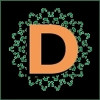Abstract
To complement this volume’s enquiry of the perimeters of ‘breathing’ this paper examines the interdisciplinary nature of the topic, suggesting that early modern literature (1500-1700) breathes new life and context into the history of material objects, particularly that of tapestry. It diverts from a focus on how tapestry weaves narrative and instead explores the reverse - how narrative can re-weave ideas about tapestry. This paper also examines the interactions between the tapestry and early modern literature, through the concept of breathing as a metaphor for weaving narrative and history, and asks: what can early modern literature tell us about tapestry that is not apparent in collections today? It focuses on how tapestry is: mobile, being transported beyond its spatial surroundings; malleable, as the tapestry form can be altered; and finally, modified into a paradoxical form that simultaneously has a surface appearance but also conceals objects and features. This article ultimately argues that tapestry was not merely a decorative feature but a physical object that could be altered by both the writer and its readers.
Keywords: breathing, early modern literature, modified, mobile, malleable, tapestry
How to Cite:
Qureshi, M., (2018) “Mobile, Malleable, and Modified: Tapestry in Early Modern Literature”, Dandelion: Postgraduate Arts Journal and Research Network 9(1). doi: https://doi.org/10.16995/ddl.688
Downloads:
Download PDF
3853 Views
712 Downloads

